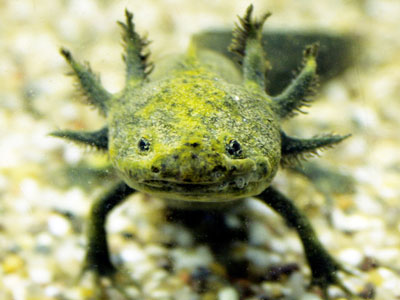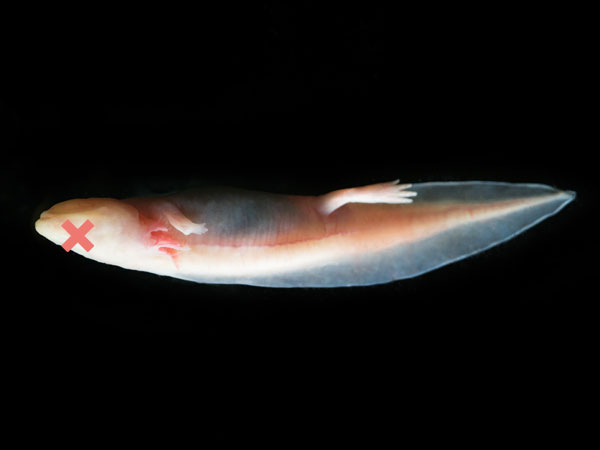
Axolotls are relatively long-living amphibians that are distinguishable through the fact that they continue living in water even after their reach adulthood. Another interesting fact is that captive axolotls can live longer than wild axolotls.
How long do axolotls live for? Is there anything you can do to prolong their lives? What are the basic tank requirements for axolotls? What should their diets be like?
I will answer these questions about axolotls and offer you more insight into the ways to offer the best care for your axolotls.
What is the Lifespan of Axolotls?
In the wild, axolotls live between 10 to 15 years. In captivity, they may live a bit longer, depending on tank conditions and the expertise of the aquarist in how to keep them healthy. Below, you will find a handful of tips on how to improve the lifespan of your axolotl.
Plus, in captivity, many of the threats axolotls face in their natural habitat (e.g. pollution, loss of habitat, etc.) are eliminated. Of course, raising axolotls in captivity is not without its challenges as axolotls can suffer from various diseases that are a direct cause of their keeping conditions.
Many of these axolotl diseases are completely preventable, so if you take good care of your axolotls, you can help them beat their average life expectancy and enjoy them for many years longer.
Once you have a better understanding of what axolotls need and how they should be kept in an aquarium, you can create tank conditions that are favorable for them.
In what follows, you can read about the basic keeping requirements for axolotls, what you should and shouldn’t do when raising axolotls, and some best practices in axolotl keeping, so you can raise healthy axolotls and prolong their life spans.
Tips to Improve the Lifespan of Your Axolotl
Axolotls have a remarkable ability to regenerate many body parts including some internal organs. This means that they can recover in a matter of weeks from physical damages like losing a limb or a gill stalk by regenerating these body parts.
Because of this ability, axolotls are one of the most researched salamanders in the world in the hope of finding answers to how we can apply what we know about axolotls in the field of human tissue regeneration.
But this ability isn’t enough to ward off infections, parasites and GI tract related problems (e.g. impaction) that may arise in not practicing good tank hygiene and maintenance.
Here are some ways to reduce the incidence of diseases and other life-threatening illnesses in axolotls:
1. Strive for Ideal Tank Conditions
Axolotls can tolerate certain water conditions, but it’s best to strive for ideal tank conditions, which allow them to function at their best.
Ideal axolotl tank conditions include:
- 15-20-gallon aquarium
- Water temperature between 60-64 °F (16 -18 °C)
- Water pH level 7.4 – 7.6
- Slightly hard water
- Water must be dechlorinated
- Tank must be properly cycled before adding axolotls
- Aquarium filter is a must
- No strong currents in the tank (only gentle current)
- Sand substrate or no substrate to avoid axolotls ingesting pebbles or gravel (it can cause impaction which can be fatal)
- No artificial lights are needed, if installed make sure your axolotls have plenty of hiding spaces as they don’t enjoy strong lights
- Make sure the tank also has a hood or lid as axies are known to jump out of their tanks.
This is a quick run-down of the conditions in which axolotls can thrive. I encourage you to read more about each aspect of axolotl water requirements to set up an ideal aquarium.
2. Know What You’re Feeding Them & How to Feed Axolotls
Axolotls are carnivores and they eat a variety of meaty foods in the wild including small fish, insects, snails, worms, and literally any other small aquatic creature they can swallow.
Adult axolotls don’t require daily feedings, they can go quite a long time without any food but do feed them every 2-3 days. Feeding them every day is not needed and it can cause constipation.
In captivity, axolotl staple foods include earthworms, brine shrimp, bloodworms, tubifex, soft salmon pellets.
Sourcing the foods from contaminant-free and preferably fish-free waters in best. Water-based foods can carry parasites that can infect your axolotls too. If you can, make your own cultures.
3. Eliminate Stress Triggers
Stress is a major cause of disease among axolotls raised in captivity. There are many things that can cause stress and the only way to prevent stress-related diseases is to take a proactive approach.
Here’s what you should focus on:
- Monitor water parameters, making sure they’re stable and within the range preferred by axolotls
- Perform weekly water changes and remove any rotting plants or leftover foods
- Avoid strong lights or direct sunlight, keep your axolotl tank in a cool area
- Avoid strong currents
- Avoid tank mates that can cause injuries or hurt your axolotls in any way
- Don’t overfeed
4. Read About Common Axolotl Diseases & Remedies
Axolotls are prone to various diseases like impaction (caused by the ingestion of something large that gets stuck in their GI tract), parasitic infections, ammonia poisoning, hyperthermia (if kept in water that is too warm for them), bacterial infection or fungal infections.
Read up on axolotl diseases and remedies, so you’ll know how to spot signs of disease and what treatments to use for best results.
5. Be Informed About Axolotls
Besides monitoring your axolotls, their water parameters, performing regular tank maintenance, and offering them a good diet, you should continue informing yourself about axolotls and stay up to date with the newest recommendations for axolotl care.
Conclusion
Once you know how to manage the requirements of axolotls, you can ensure that they are protected from stress, stress-induced diseases and a variety of other preventable diseases.
Axolotls can live longer in captivity, where they aren’t exposed to natural threats and pollutants. A big part of ensuring that your axolotls live beyond the 10-15 years average is to offer them ideal tank conditions and a good diet.
Hopefully, you can implement the tips I offered in this article and you can continue to inform yourself about the best ways to ensure that your axolotls stay healthy and strong.




